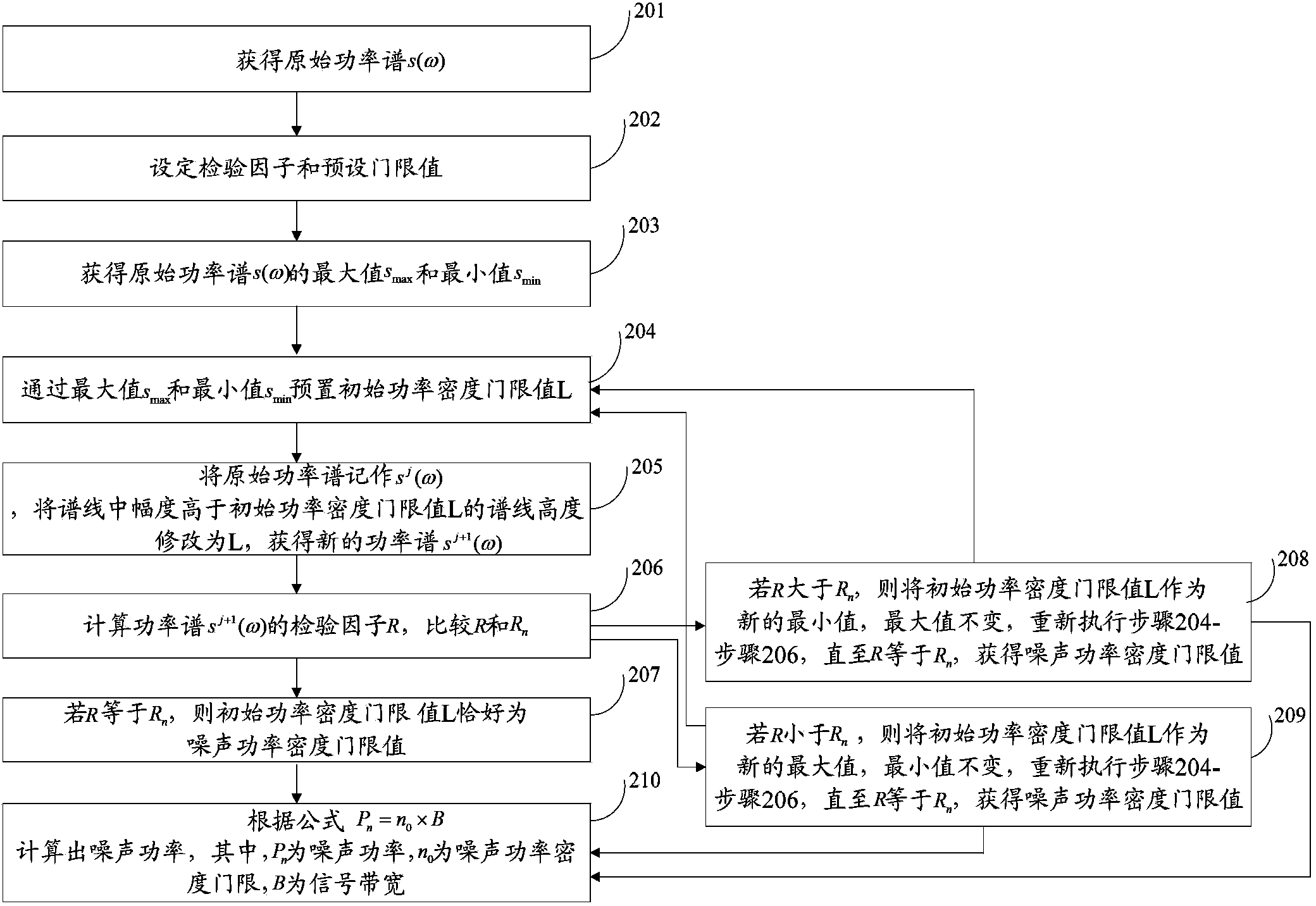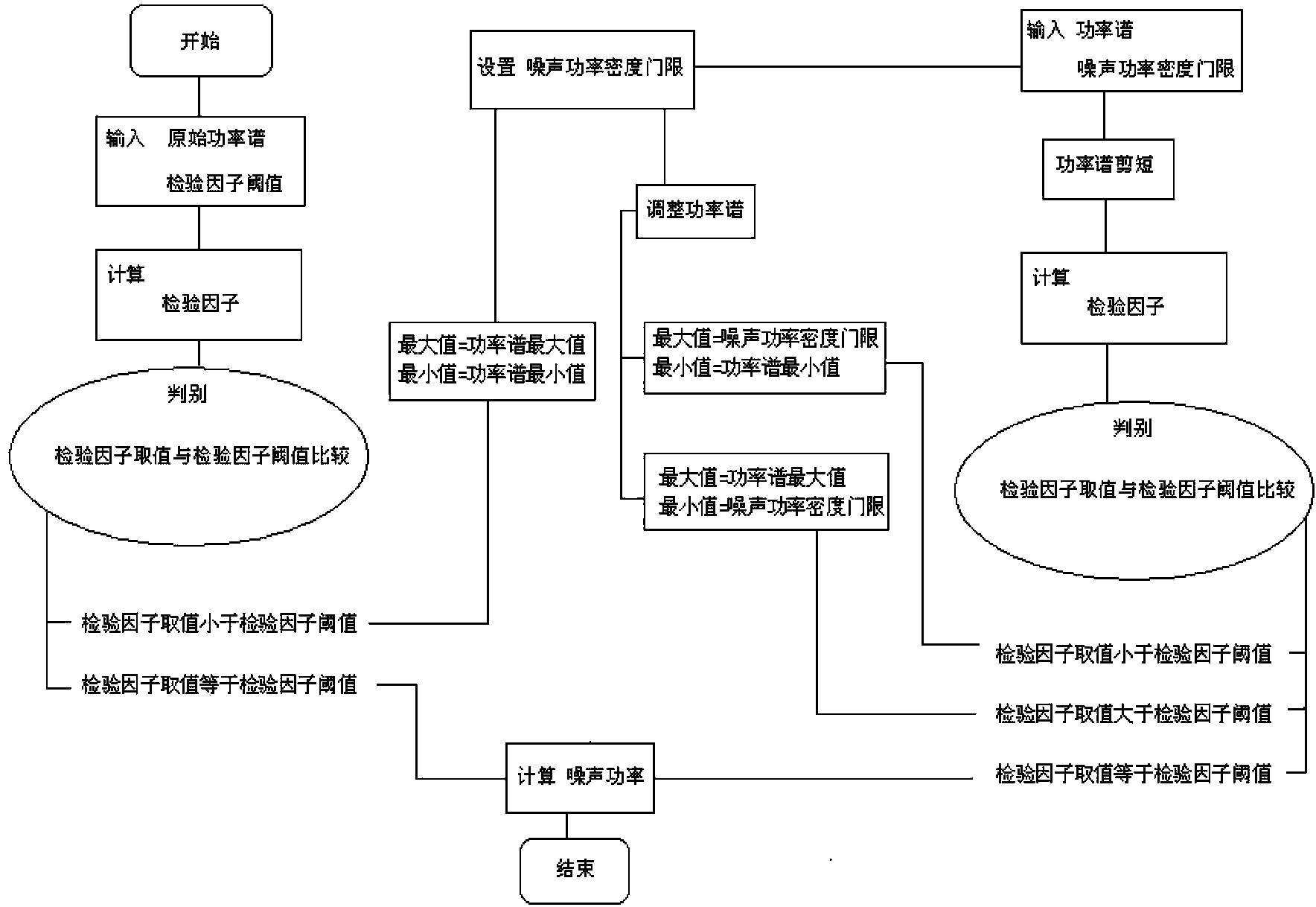Method for determining noise power of wind profile radar
A wind profiler radar and noise power technology, which is applied to the reflection/re-radiation of radio waves, radio wave measurement systems, and the use of re-radiation, etc. The number of iterations, the effect of speeding up the calculation, and improving the accuracy
- Summary
- Abstract
- Description
- Claims
- Application Information
AI Technical Summary
Problems solved by technology
Method used
Image
Examples
Embodiment 1
[0032] This embodiment provides a method for determining the noise power of the wind profile radar, such as figure 1 As shown, the method includes:
[0033] 101. Determine the specific value of the test factor when all the power signals are white noise according to the window function and the power spectrum average times used when generating the power spectrum.
[0034] Among them, after the specific value of the inspection factor is determined, the inspection factor is calculated according to the power spectrum of each range gate; the signal component is judged according to the calculation result of the inspection factor, and the direction of the calculation process is determined according to the signal component; when the calculated inspection factor is equal to the specific value of the inspection factor When , the power spectrum is all the noise power spectrum, and the calculation process stops; when the test factor is less than the specific value of the test factor, the p...
Embodiment 2
[0043] This embodiment provides a method for determining the noise power of the wind profile radar, taking the noise power measurement of the wind profile radar as an example, as figure 2 As shown, the method includes:
[0044] 201. Obtain the original power spectrum s(ω).
[0045] For example, the power spectrum s(ω) obtained as Figure 4 shown.
[0046] The wind profiler radar uses the improved periodogram method to estimate the power spectrum, and the process is as follows:
[0047] First of all, it needs to be explained that the power spectrum s(ω) of the random process X needs to be estimated with the sample sequence of the process. The sample sequence x(n) of a random process is generally an infinitely long sequence. However, we can only use an observation sequence x of x(n) N (n) Estimate the power spectrum. The subscript N represents the sequence length, then:
[0048] x N (n)=w s (n)×x(n) (1)
[0049] Among them, w s (n) is a window function added to the s...
Embodiment 3
[0092] This embodiment provides a device 30 for determining the noise power of the wind profile radar, such as Image 6 As shown, the device 30 includes:
[0093] Determining unit 31, for determining the specific value of the test factor when all the power signals are white noise according to the window function and power spectrum averaging times adopted when generating the power spectrum;
[0094] Threshold value acquisition unit 32, for obtaining the preset noise power density threshold value according to the maximum value and the minimum value of the power spectrum corresponding to each range gate acquired;
[0095] The power acquisition unit 33 is configured to reduce the amplitude of the spectral lines in the power spectrum whose amplitude is higher than the preset noise power density threshold value to be equal to the preset noise power density threshold value, and obtain a new power spectrum;
[0096] A calculation unit 34, configured to calculate a test factor accord...
PUM
 Login to View More
Login to View More Abstract
Description
Claims
Application Information
 Login to View More
Login to View More - Generate Ideas
- Intellectual Property
- Life Sciences
- Materials
- Tech Scout
- Unparalleled Data Quality
- Higher Quality Content
- 60% Fewer Hallucinations
Browse by: Latest US Patents, China's latest patents, Technical Efficacy Thesaurus, Application Domain, Technology Topic, Popular Technical Reports.
© 2025 PatSnap. All rights reserved.Legal|Privacy policy|Modern Slavery Act Transparency Statement|Sitemap|About US| Contact US: help@patsnap.com



